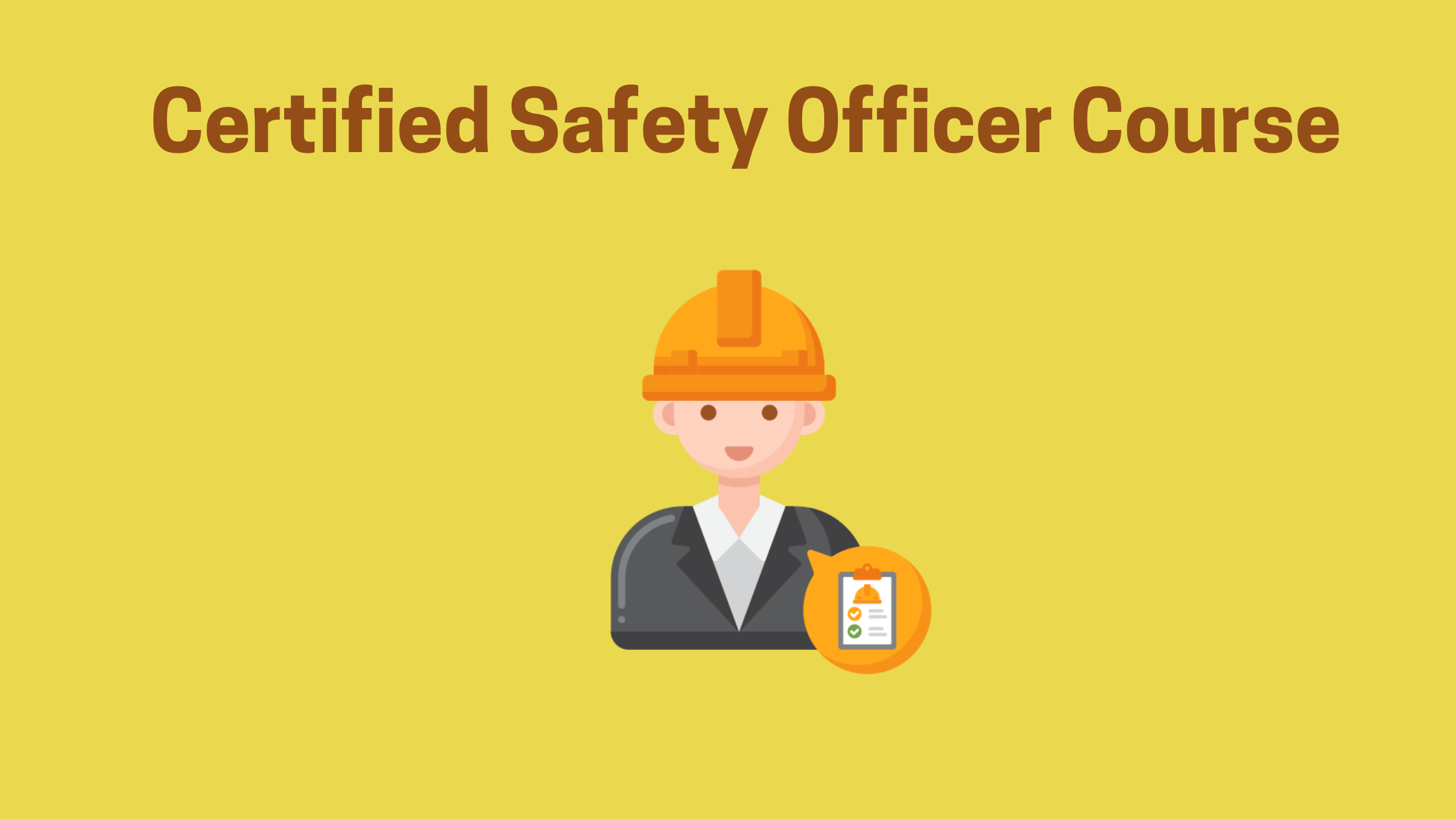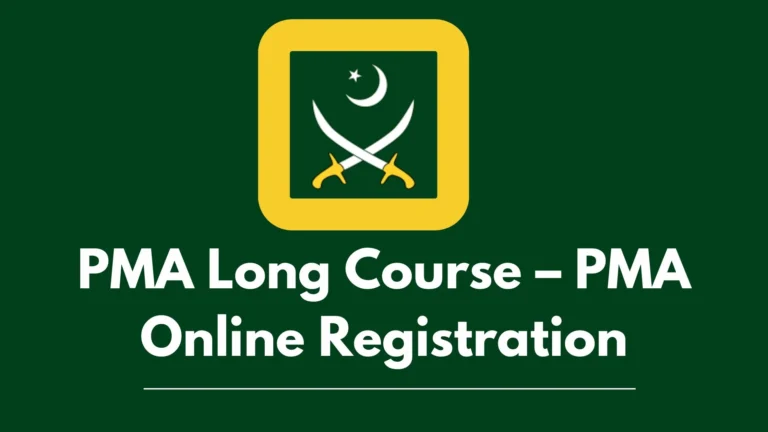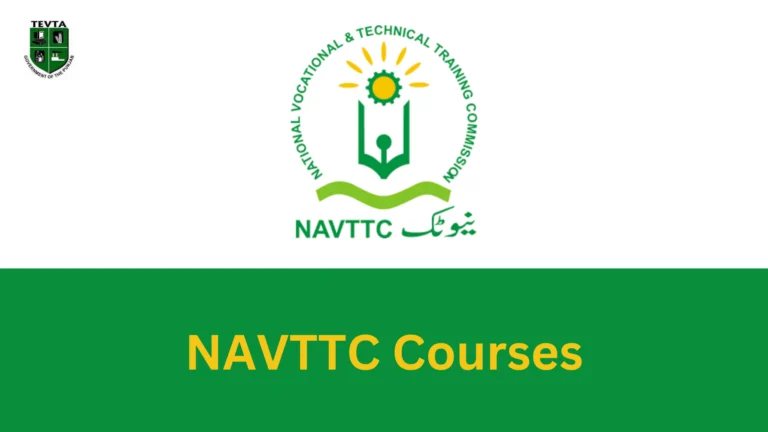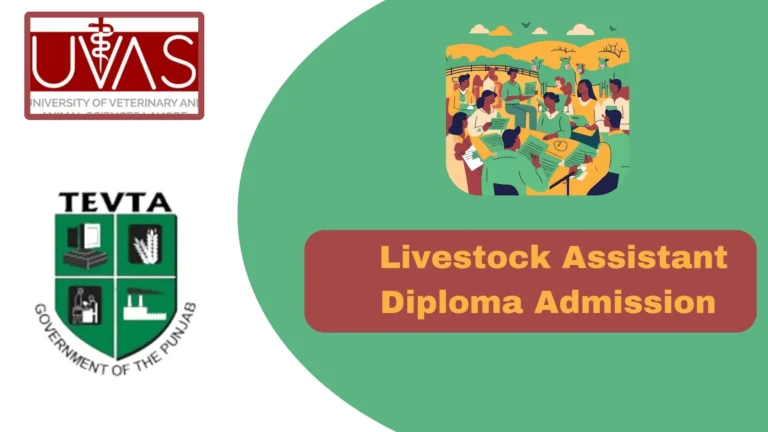Certified Safety Officer Course
Safety Officer course provided by Tevta courses: The major objective of this course on Safety Inspectors is to develop and enhance the skill level of those entering this trade of the construction industry. The semi-skilled and skilled workers produced by this training will help reduce unemployment and poverty in society.
This Curriculum is designed to train the Intermediate / Graduation pass persons who need more Safety. This training program is not just about equipping you with the necessary knowledge and skills for employment but also about fostering a professional approach that could enable you to start your own business.
The Curriculum is designed to meet the local and international market requirements, ensuring that you are well-prepared to meet the job market and contribute to reducing the shortage of Semi-Skilled and Skilled workers in the area.
Safety Officer Course – CURRICULUM SALIENTS
SKILL PROFICIENCY DETAILS
After completion of the safety officer course in Rawalpindi, the trainee should possess the following qualities:
Also see: Governor Sindh Free IT Course – Join Now
KNOWLEDGE PROFICIENCY DETAILS
After completion of the safety officer course in Pakistan the trainee should possess the following qualities:
SCHEME OF STUDIES Safety Inspector (3 Months Course)
| S.No | Main Topics | Theory Hours | Practical Hours | Total Hours |
|---|---|---|---|---|
| 1 | Management of Health and Safety | 6 | 4 | 10 |
| 2 | Principles of Control | 16 | 42 | 58 |
| 3 | Scaffolding Hazards and Control | 4 | 33 | 37 |
| 4 | Project Construction Site Hazards and Control | 14 | 65 | 79 |
| 5 | Rigging Hazards and Control | 4 | 12 | 16 |
| 6 | Crane Hazards and Control | 4 | 12 | 16 |
| 7 | Chemical and Biological Health Hazard and Control | 6 | 24 | 30 |
| 8 | Welding Hazards and Control | 2 | 22 | 24 |
| 9 | Fire Prevention and Fire Fighting Hazards and Control | 12 | 58 | 70 |
| 10 | I.T Fundamentals | 4 | 16 | 20 |
| 11 | Functional English | 15 | 25 | 40 |
| Total | 87 | 313 | 400 |
Detail of Course Contents Safety Inspector (3-Month Course)
Below is a detailed table for the course contents of the safety officer course in Lahore
(3-Month Course), organizing the topics along with their respective theory and practical hours.
| S.No | Topics | Theory Hours | Practical Hours |
|---|---|---|---|
| 1 | Management of Health and Safety | 6 | 4 |
| 1.1 | Introduction | ||
| 1.2 | Foundation in Health and Safety | ||
| 1.3 | Importance of setting policy for health and safety | ||
| 1.4 | Legal and organizational health and safety roles | ||
| and responsibilities | |||
| 1.5 | Concept of safety culture | ||
| 1.6 | Factors affecting safety ppppculture | ||
| 1.7 | Factors affecting safety-related behavior | ||
| 1.8 | Improving health and safety culture | ||
| 1.9 | Workplace inspection | ||
| 1.10 | Risk assessment | ||
| 1.11 | Job description of Safety Inspector | ||
| 2 | Principles of Control | 16 | 42 |
| 2.1 | General principles of controlling hazards and reducing risks | ||
| 2.2 | Safe work practice | ||
| 2.2.1 | Work at height | ||
| 2.2.2 | Scaffolding erection and use | ||
| 2.2.3 | Pressure testing | ||
| 2.2.4 | Hydro testing | ||
| 2.2.5 | Sand Blasting and painting | ||
| 2.2.6 | Crane operation and (Rigging and Lifting) | ||
| 2.2.7 | Hot work in match area of oil and gas project | ||
| 2.2.8 | Shifting of Radioactive and other hazardous materials | ||
| 2.2.9 | Role of MSDS for safe handling materials | ||
| 2.2.10 | Housekeeping | ||
| 2.2.11 | Hand and Power Tools safety uses | ||
| 2.3 | Personal protective equipment and uses | ||
| 2.4 | Toolbox talk | ||
| 2.5 | Types of work permit | ||
| 2.6 | General principles of permit to work systems | ||
| 2.7 | Hot Work Permit | ||
| 2.8 | Height Work Permit | ||
| 2.9 | Cold Work Permit | ||
| 2.10 | Hydro Test Permit | ||
| 2.11 | Excavation Work Permit | ||
| 2.12 | Confined Space Entry Permit | ||
| 2.13 | Radiography Permit | ||
| 2.14 | Erection Work Permit | ||
| 2.15 | Responsibilities of permit receivers | ||
| 2.16 | Responsibilities of permit issuer | ||
| 2.17 | Safe work practice of hand tools and power tools | ||
| 2.18 | Electrical hazards and control | ||
| 2.18.1 | Hazards and risk associated with electricity at work | ||
| 2.18.2 | Control measures | ||
| 3 | Scaffolding Hazards and Control | 4 | 33 |
| 3.1 | An introduction to scaffolding | ||
| 3.2 | Hazards on scaffolding | ||
| 3.3 | Scaffolding safety procedures | ||
| 3.4 | Fall protection systems and application | ||
| 3.5 | Machine guarding | ||
| 4 | Project Construction Site Hazards and Control | 14 | 65 |
| 4.1 | Introduction | ||
| 4.2 | Hazard assessment | ||
| 4.3 | Health hazard (noise, Vibration, Heat, Stress, Violation) | ||
| 4.4 | Unsafe act on construction site | ||
| 4.5 | Unsafe condition on construction site | ||
| 4.6 | Safety of work at height | ||
| 4.7 | Excavations and underground services | ||
| 4.8 | Safety Signs | ||
| 4.9 | Incident, injury, investigation, and remedial measures | ||
| 4.10 | Waste segregation and disposal at construction site | ||
| 4.11 | Precaution during sand blasting and painting | ||
| 4.12 | Common causes of injuries and accidents at work site | ||
| 4.13 | Strict discipline at work site | ||
| 4.14 | Requirements during working at night | ||
| 4.15 | Incident reporting and investigation at site | ||
| 4.16 | HSE emergency response | ||
| 5 | Rigging Hazards and Control | 4 | 12 |
| 5.1 | Rigging Process | ||
| 5.2 | Rigging Equipment | ||
| 5.2.1 | Steel Wire Rope | ||
| 5.2.2 | Wire rope slings | ||
| 5.2.3 | Chain slings | ||
| 5.2.4 | Fiber Webbing Sling | ||
| 5.2.5 | Attachment Hooks | ||
| 5.2.6 | Shackles | ||
| 5.2.7 | Chain pulley blocks | ||
| 5.2.8 | Chain lever hoist | ||
| 5.2.9 | Puller | ||
| 5.2.10 | Rope snatch and pulley blocks | ||
| 5.2.11 | Traveling girder trolley | ||
| 5.2.12 | Winches | ||
| 6 | Crane Hazards and Control | 4 | 12 |
| 6.1 | Lifting Principle of mobile crane | ||
| 6.2 | Center of gravity | ||
| 6.3 | Leverage | ||
| 6.4 | Stability | ||
| 6.5 | Structural stability | ||
| 6.6 | Crane hand signals | ||
| 6.7 | Crane Hazards | ||
| 6.7.1 | Improper Load | ||
| 6.7.2 | Speed | ||
| 6.7.3 | Hand signal | ||
| 6.7.4 | Inadequate inspection and maintenance | ||
| 6.7.5 | Unguarded part and radius | ||
| 6.7.6 | Improper exhaust system | ||
| 6.7.7 | Shattered window and boom angle | ||
| 6.7.8 | Crane safety Operation | ||
| 7 | Chemical and Biological Health Hazard and Control | 6 | 24 |
| 7.1 | Forms and classification of hazardous substances | ||
| 7.2 | Risk associated with hazardous substances | ||
| 7.3 | Acute and chronic health effects | ||
| 7.4 | Control measures | ||
| 7.5 | Waste disposal and control of pollution | ||
| 8 | Welding Hazards and Control | 2 | 22 |
| 8.1 | Welding Protective clothing and tools | ||
| 8.2 | Welding safety procedures | ||
| 8.3 | Hazards in welding | ||
| 8.4 | Safety precaution in welding and burning activities | ||
| 9 | Fire Prevention and Fire Fighting Hazards | 12 | 58 |
| 9.1 | Basic fire fighting |
LIST OF PRACTICALS
- Practical for the safety awareness & Escape
- Practical for the preparation of safety inspection checklist
- Absolutely essential for the safe erection and dismantling of basic scaffolds.
- To demonstrate Breathing Apparatus.
- Practical for the Lifting Operation
- Practical for the work at height
- Practical for the heart saver first aid
- Practical for Hazard analysis at work
- Practicals for basic fire fighting.
- Prepare job risk assessment report.
- Practicals for the fire drill.
- Practicals for the safety audit.
- Practical for basic machine safety
- Practicals for the Conduction Tool Box Talk.
- Taking care of housekeeping work at the given site.
- It is practical to Conduct inspection and color coding.
- Practicals for making and identifying the safety signs.
- Identify and make proper use of the relevant PPE.
- Practicals for the strict discipline on construction site.
- Practicals for the reporting and investigation of accidents at construction sites.
- Perform the HSE emergency response.
- Prepare hazards assessment.
- Identify and report the crane hazards.
- Practicals for the use and refilling of the different types of fire extinguishers.
SCHEME OF STUDIES I.T Fundamentals
| S.No | Main Topics | Theory Hours | Practical Hours | Total Hours |
|---|---|---|---|---|
| 1 | Introduction to Computers | 1 | 4 | 5 |
| 2 | Typing – Microsoft Word | 2 | 6 | 8 |
| 3 | Internet & Electronic Mail | 1 | 6 | 7 |
| Total | 04 | 16 | 20 |
DETAIL OF COURSE CONTENTS I.T Fundamentals
| S. No | Detail of Topics | Theory Hours | Practical Hours |
|---|---|---|---|
| 1 | Introduction to Computers | 1 | 4 |
| 1.1 What is a computer – Definition, functions and general features? | |||
| 1.2 What is Hardware – | |||
| 1.2.1 Computer parts and units | |||
| 1.2.1.1 Input Unit – Keyboard, Mouse etc. | |||
| 1.2.1.2 Central Processing Unit | |||
| 1.2.1.3 Output Unit | |||
| 1.3 What is Software – | |||
| 1.5 What are the Icons, Shortcuts, and other graphics? | |||
| 1.3.1 Electronic Parts of a PC is | |||
| 1.3.1.2 System Software, Application Software | |||
| 1.4 Working with Windows Operating System | |||
| 1.4.1 How does Windows desktops work? | |||
| 1.1 What is a computer? What are its definition, functions, and general features? | |||
| 1.5.1 How to see computer contents on different drives etc. | |||
| 2 | Typing and Word processing (MS Word) | 2 | 6 |
| 2.1 Proper way of typing correctly and quickly – getting familiar with the keys | |||
| 1.3.1.1 Software and its Types | |||
| 2.3 How to get it printed? | |||
| 3 | Emailing and Internet Surfing | 1 | 6 |
| 3.2 How to use email? How to search on the web? Etc | |||
| 2.2 Where to type in the computer? How to save a file? How to get it back? Where to find your saved work? | |||
| 3.1 How to go to the Internet, what is required for an Internet connection, etc. | |||
| Total | 4 | 16 |
Also see: Alkhidmat Foundation Free Courses Apply Online
LIST OF PRACTICALS I.T Fundamentals
| S. No | Name of Practical |
|---|---|
| 1 | Turn On/Off and setting of power supply |
| 2 | Accessing The Desktop |
| 3 | Using of Icons and Shortcuts |
| 4 | Setting / customizing the desktop |
| 5 | Viewing the contents of computer – Directory |
| 6 | Copying, Deleting and Moving Files in a folder |
| 7 | Working with different Applications |
| 8 | Opening MS Word for typing |
| 9 | First lesson of Typing A S D F |
| 10 | Second Lesson of typing J K L ; |
| 11 | Third Lesson U I O P |
| 12 | Fourth Lesson R E W Q |
| 13 | Fifth Lesson N M , . |
| 14 | Sixth Lesson V C X Z |
| 15 | Seventh Lesson All letter using R index Finger |
| 16 | Eighth Lesson All letter using L index Finger |
| 17 | Formatting in MS Word Bold, Italic etc. |
| 18 | Using Internet |
| 19 | Opening Email, making new account |
| 20 | Sending Receiving Emails |
SCHEME OF STUDIES Functional English
| S.No | Main Topics | Theory Hours | Practical Hours | Total Hours |
|---|---|---|---|---|
| 1 | Introduction of English Sentence Structure | 2 | 3 | 5 |
| 2 | Use of present indefinite tense | 2 | 3 | 5 |
| 3 | Use of ‘is’ ‘are’ ‘am’ questions and negatives | 2 | 3 | 5 |
| 4 | Ask questions | 2 | 3 | 5 |
| 5 | Express daily routines | 2 | 3 | 5 |
| 6 | Know how to address people | 1 | 2 | 3 |
| 7 | Provide written feedback | 1 | 2 | 3 |
| 8 | Dialogues | 1 | 2 | 3 |
| 9 | Understand vocabulary | 1 | 2 | 3 |
| 10 | Application/C.V. | 1 | 2 | 3 |
| Total | 15 | 25 | 40 |
DETAIL OF COURSE CONTENTS Functional English
| S. No | Detail of Topics | Theory Hours | Practical Hours |
|---|---|---|---|
| 1 | Introduction of English sentence structure | 2 | 3 |
| 2 | Use of present indefinite tense with exercises | 2 | 3 |
| 3 | Use of ‘is’ ‘are’ ‘am’ questions and negatives | 2 | 3 |
| 4 | 4.1 Ask questions | ||
| 4.1.1 At workplace | |||
| 4.1.2 In the market | |||
| 4.1.3 In classroom | 2 | 3 | |
| 5 | 5.1 Express daily routines | ||
| 5.1.1 Before going to college | |||
| 5.1.2 Dealing with colleagues | |||
| 5.1.3 Going to market | 2 | 3 | |
| 6 | 6.1 Know how to address people | ||
| 6.1.1 In Meetings | |||
| 6.1.2 In class | 1 | 2 | |
| 7 | 7.1 Provide written feedback | ||
| 7.1.1 After visiting the market | |||
| 7.1.2 On some official task | 1 | 2 | |
| 8 | 8.1 Dialogues | ||
| 8.1.1 With colleague | |||
| 8.1.2 Teacher/student | |||
| 8.1.3 Employer/employee | |||
| 8.1.4 Booking on railway station | 1 | 2 | |
| 9 | Understand vocabulary | 1 | 2 |
| 10 | Application / C.V. | 1 | 2 |
| Total | 15 | 25 |
LIST OF PRACTICALS Functional English
LIST OF LABS
- Safety Inspector
- 1- Safety Workshop
- I.T Fundamentals
- 1- Computer Lab
LIST OF MACHINERY, EQUIPMENT & TOOLS For 25 Students
| Name of Trade | Safety Inspector |
|---|---|
| Duration | 03 Months |
| S. No. | Description | Quantity |
|---|---|---|
| 1 | Breathing Apparatus | 2 |
| 2 | Spanner Set | 10 |
| 3 | Net | 5 |
| 4 | Harness | 20 |
| 5 | Safety Belt | 10 |
| 6 | Hammers | 10 |
| 7 | Adjustable Wrench | 20 |
| 8 | Aluminum Ladder | 20 |
| 9 | Fire Extinguisher DCP & CO2 | 10 |
COMPUTER LAB
| S. No. | Tools / Equipment | Quantity |
|---|---|---|
| 1 | Desktop computer (Specifications as per notification issued by MIS Section, TEVTA) | 26 (1 for each student & 1 for the teacher) |
| 2 | Printer (Laser) | 01 |
| 3 | Scanner | 01 |
| 4 | Internet Connection (At least 1 MB speed) | 01 |
| 5 | UPS 10 KVA | 01 |
| 6 | Air Conditioner 1 ½ Ton | 02 |
| 7 | Multimedia Projector | 01 |
LIST OF CONSUMABLE MATERIALS (Safety Inspector)
| S. No | Item | Quantity |
|---|---|---|
| 1 | Fire Hose 2 ½” x 50ft | 4 Nos. |
| 2 | Fire Extinguishers Refills | 40 Nos. |
| 3 | Breathing Apparatus refilling | 20 Nos. |
| 4 | First Aid Kits | 10 Nos. |
| 5 | Metal Markers | 40 Nos. |
| 6 | Stationery (Work permit) | 1200 Nos. |
| 7 | Tags (3 Colors) | 1200 Nos. |
| 8 | Fire Blankets | 20 Nos. |
| 9 | Paints Enamel | 12 Ltrs |
| 10 | Paint Brush | 10 Nos. |
| 11 | Black Permanent Markers | 80 Nos. |
| 12 | Sand | 20 Cft |
| 13 | Overall | 80 |
| 14 | Safety Shoes | 40 |
| 15 | Safety Helmet | 40 |
| 16 | Safety Goggles | 40 |
| 17 | Ear Plugs | 40 |
| 18 | Safety Gloves | 40 |
| S. No. | Category | Item | Quantity |
|---|---|---|---|
| 1 | Functional English | Stationery | As per requirement |
| 2 | Board Markers | As per requirement | |
| 3 | I.T Fundamentals | Printing Paper | As per requirement |
| 4 | Printer Toner | As per requirement |
EMPLOYABILITY OF PASS-OUTS
Those who successfully complete the course pass out can serve as skilled professionals in the following sectors:
- Plant construction (Powerhouses, Fertilizer plants, Cement plants, and Oil & Gas
plants, etc.) - Civil construction works / sites
- To start their own business of services.
- To work in specific fields like maintenance/shutdown services.
- To work as a contractor / sub-contractor.
Also see: Advanced Diploma in Land Resource Survey & GIS (6-Month Course)
MINIMUM QUALIFICATION OF TEACHER / INSTRUCTOR
a) Instructor
- D.A.E / B. Tech. / Foreign Qualified would be preferred
- 10 years’ experience in the Construction Industry
- Computer proficiency
b) Demonstrator
- Intermediate with Safety courses completed.
- 10 years’ experience in the Construction Industry
- Ability to use a computer.
Functional English
- M.A. (English)
I.T Fundamentals
- DAE CIT/ BCS from HEC recognized university
REFERENCE BOOKS
- Engr. Anwar H. Siddiqui & Engr C. L. Nankani, An Introduction To Occupational
Health, Safety And Environment, Iep - Paul Hughes, Ed Ferrett’ Introduction To Health And Safety At Work, 3rd Edition,
Elsevier.
Functional English
- High School English Grammar By Wren & Martin
- Oxford English Grammar
I.T Fundamentals
- Introduction to Computer by Peter Norton
- 2007 Microsoft® Office System Step by Step by Joyce Cox, Steve Lambert, and
Curtis Frye - Internet and E-mail with Windows 7 by Studio Visual Steps.
LIST OF TRADE RELATED JARGON
- ANSI American National Standards Institute
- ACOP Approved Code of Practice
- AEL Approved Equipment List
- BA Business Area
- BMS Burner Management System
- BFF Basic Fire Fighting
- BASP Breathing Apparatus Safety Precaution
- CA Competent Authority
- CSO Crane Safety Operation
- CASS Conformity Assessment of Safety Systems
- COMAH Control of Major Accident Hazards
- CCF Common Cause Failure
- CMF Common Mode Failure
- CA Competent Authority
- CMS Competency Management System
- CWF Competent WorkForce
- DF Dangerous failure
- EUC Equipment under control
- FS Functional safety
- FSA Functional Safety Assessment
- FST Fire Safety Tips
- FSMS Functional Safety Management System
- HT Hazard Type
- HE Hazardous Event
- HOS Hazards on scaffolding
- HS Hazardous situation
- HSE Health Safety Environment
- HSE Health and Safety Executive
- HMI Human Machine Interface
- IPL Independent Protective Layer
- IPF Instrumented Protective Function
- IPS Instrumented Protective System
- JRA Job Risk Assessment
- LDM Low Demand Mode
- LTI Lost Time Injury
- MOC Management of Change
- MAPP Major Accident Prevention Policy
- MTBF Mean Time Between Failures
- MTTR Mean Time to Repair
- NRR Necessary Risk Reduction
- NASC National Access and Scaffolding Confederation
- O&M Operations & Maintenance
- OSHA Occupational Safety & Health Administration
- PFEER Prevention of Fire & Explosion & Emergency Response
- PHR Process Hazard Review
- PFD Probability of failure on demand
- PCS Process Control System
- PPE Personal Protective Equipment
- PST Process Safety Time
- PSM Process Safety Management
- PAR Preventive Action Request
- QRA Quantified Risk Analysis
- QHSE Quality Health Safety Environment
- QR Quantified Reliability
- QD Quantified Design
- RA Risk Analysis / Assessment
- RBSA Risk-Based Safety Analysis
- RBSI Risk-Based Inspection
- RC Risk Criteria
- RE Risk Estimation
- RG Risk Graph
- RR Risk Reduction
- SCS Safety Critical system
- SCBA Self-Contained Breathing Apparatus
- SSP Scaffolding Safety Procedures
- SFRS Safety Functions Requirements Specification
- SIF Safety Instrumented Function
- SICS Safety Instrumented Control System
- SIPF Safety Instrumented Protection Function
- SIS Safety Instrumented System
- SIL Safety Integrity Level
- SIRS Safety Integrity Requirements Specification
- SLCMP Safety Life Cycle Management Plan
- SRS Safety Related System / Software
- SRS Safety Requirements specification
- SFAM Systematic Fault Avoidance Measures
- SFTM Systematic Fault Tolerance Measures
- SWM Solid Waste Management
- TRA Task Risk Assessment
Curriculum Revision Committee
Engr. Mazhar Abbas Naqvi
Principal,
Govt. Staff Training College, Faisalabad
Convener
Mr. Amjad Rafique,
Sr. Instructor,
GCT Rasul
Member.







